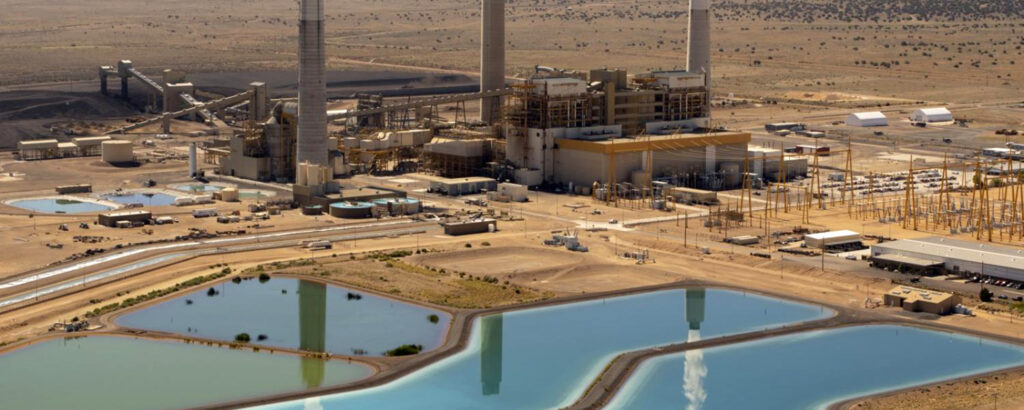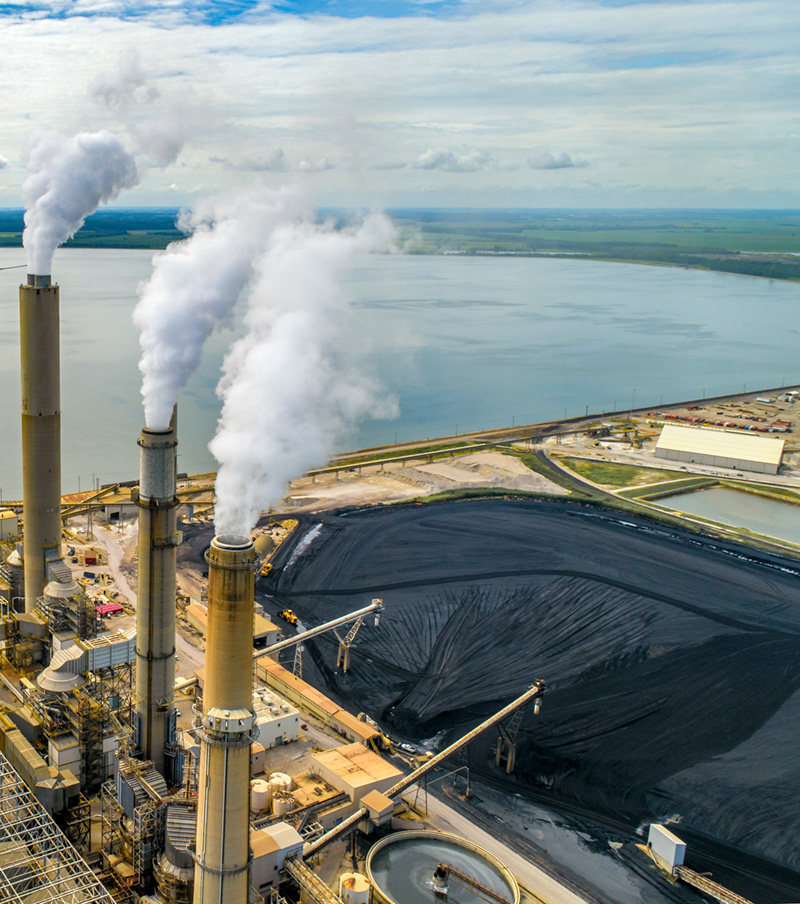How EPRI and four member utilities fast-tracked research in response to a court decision about coal combustion products (CCPs)
The vast majority of coal plants in the United States were built between 1950 and 1990, including a burst of construction from the early 1970s to the mid-1980s. For much of the time when new coal plants were being built, few special precautions were implemented to ensure that the byproducts that come from burning coal—including fly ash, bottom ash, and boiler slag, collectively known as coal combustion products, or CCPs—didn’t contaminate groundwater.
“Back then, coal ash was sometimes managed like an inert material,” said Bruce Hensel, an EPRI Technical Executive, who has done extensive research about the most effective ways to protect groundwater from contamination by CCPs. Those past management practices sometimes resulted in landfills and impoundments that were built without any extra protective lining to ensure that trace elements like arsenic, boron, and selenium or soluble salts like calcium and sulfur found in CCPs couldn’t leach into nearby groundwater.
The industry has made great strides over the past decades to protect groundwater and pursue many of the beneficial applications that CCPs are used in today, from cement to wallboard, to agricultural applications. When you build a landfill or any structure designed to contain a waste material today, whether it’s coal ash or municipal waste or radioactive waste, modern construction standards include liners and leachate collection systems so that leachate cannot escape into the environment,” Hensel said.
A Court Challenge Upends CCR Rule
In 2015 the U.S. Environmental Protection Agency (EPA) issued the CCR1 Rule to govern the disposal of CCPs. As part of the rule, the EPA completed a risk assessment that showed composite liners—which combine a geomembrane barrier over compacted clay—are the most effective tool for preventing the release of CCPs leachate to groundwater.
But the 2015 CCR Rule also allowed for the use of alternate liners, such as those made with compacted and natural clay, so long as they demonstrated their ability to prevent groundwater contamination. Put simply, while the rule made it clear that the EPA considered composite liners best, the regulators allowed for the use of alternate liners that performed equally well.
Since it was first issued, the EPA’s CCR Rule has been the subject of a series of litigation. One of the lawsuits resulted in a 2018 decision by the District of Columbia Circuit Court declaring that any impoundment holding CCPs that didn’t have a composite liner had to close. For some utilities, this blanket-statement court ruling meant the imminent closure of CCP impoundments that had been operating effectively using alternative liners.
A Rapid Response
That was exactly the dilemma the Arizona utility Salt River Project (SRP) faced. SRP had long operated an evaporation pond that held all the non-recyclable wastewater produced at its 762-megawatt Coronado coal plant. After the EPA’s CCR Rule was issued in 2015, SRP determined that the natural clay liner in place at the evaporation pond was compliant with the new regulation.
“When the CCR rule came out, impoundments could continue to receive CCRs unless they leaked. We never had a leak at the evaporation pond or any indication that the clay liner wasn’t holding up,” said Kent Liesemeyer, senior environmental compliance engineer for SRP, whose work focuses on water quality and waste management related to CCPs.
In fact, SRP determined that the existing natural clay liner—which was formed naturally 200 million years ago—was an important part of the utility’s ability to responsibly store CCP that couldn’t be used to improve other products, like concrete and asphalt. “The hopes were that Coronado would operate as long as needed, and all the coal ash would be beneficially reused, and that the evaporation pond would be closed as an ultimate and permanent CCR disposal facility for the plant. This is because the natural geological environment at the site is very good at containing the CCR and protecting human health and the environment over the long run.”

SRP wasn’t the only utility that felt strongly that the ruling of the D.C. court ordering the closure or retrofit of any facility lacking a composite liner didn’t adequately consider the effectiveness of other alternatives. At an EPRI sector meeting just one month after the court ruling, SRP joined Great River Energy, Consumers Energy, and DTE Energy Company to initiate research that analyzed the effectiveness of impoundments using alternative liners.
Traditional EPRI projects take time to gather interest and funding before proceeding to the actual research and publication of a technical report. That methodical schedule was not an option in this case. “We had a group of advisors come together at our sector meeting who said we need something to respond to the EPA,” Hensel said. “So, we pulled together this collaboration where they kicked in some money, and the research program kicked in some money, and we fast-tracked it.”
EPA Incorporates Research Findings
By February 2019, just five months after the advisory meeting and six months after the court decision, EPRI had results to share. To do the research, EPRI used the same risk assessment model that EPA had used to support its 2015 CCR Rule, albeit with modifications that allowed for analysis of the effectiveness of alternative liners. In advance of the modeling work, member utilities helped collect data and develop scenarios to model. For example, it was important for SRP to evaluate the effectiveness of different variations of natural clay liners.
Even before the research was completed, EPRI met with EPA to alert the regulators that an assessment of alternative liners was underway. By June 2019, a final report detailing the research results was complete and submitted to EPA for consideration as it formulated a rule that reflected the court’s decision.
Among the most notable findings of the research was that certain alternative liners—including thick natural clay liners and non-federally compliant composite liners—could be as protective as composite liners. When the EPA published its final Part B rule in October 2020, it cited EPRI’s research as supporting the case that alternative liners can be acceptable under certain circumstances.
The EPA rule didn’t specify which alternative liners would be acceptable. Instead, it issued performance standards alternative liners had to meet and provided a regulatory mechanism for operators of impoundments to submit applications for continuing the use of alternative liners.
Research Value
Eventually, eight companies submitted applications to use alternative liners to the EPA. Two companies withdrew their applications, and the remaining six applications were proposed to be denied by the EPA in January of 2023.
SRP was one of the companies whose application for the use of a natural clay liner EPA has proposed to deny. To support its continued use of the natural clay liner, SRP hired a consultant to drill holes every 200 feet around the 330-acre impoundment. “We wanted to further characterize what was below the ground from the surface down to the uppermost aquifer,” Liesemeyer said. “One thing that couldn’t be modeled in the EPRI approach was the time it takes water to penetrate the liner. When the liner is 225 feet thick, it takes a substantial amount of time.”
SRP is disappointed that EPA has proposed to reject its application for continued use of the alternate liner and is planning to submit robust comments contesting EPA’s proposed denial. But Liesemeyer does not question the value of collaborating with EPRI and other member utilities to evaluate the effectiveness of alternative liners. “The speed of response was a big help because it gave us a data and science-driven understanding of the solution we had in place already,” Liesemeyer said. “We thought it was a wise investment to characterize that and find out what we really had in place, and the modeling by EPRI was valuable for us and tended to confirm everything we understood about the site.”
1 USEPA used the term “coal combustion residual (CCR)” to refer to the same materials that EPRI calls CCPs. EPRI uses the CCP term to recognize the value that these materials have when beneficially used.
EPRI Technical Expert:
Bruce Hensel
For more information, contact techexpert@eprijournal.com.


